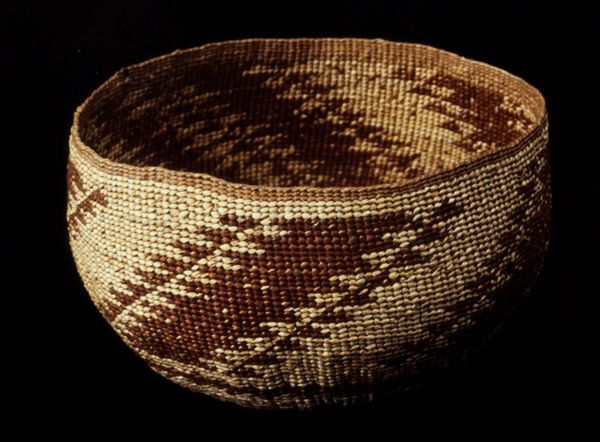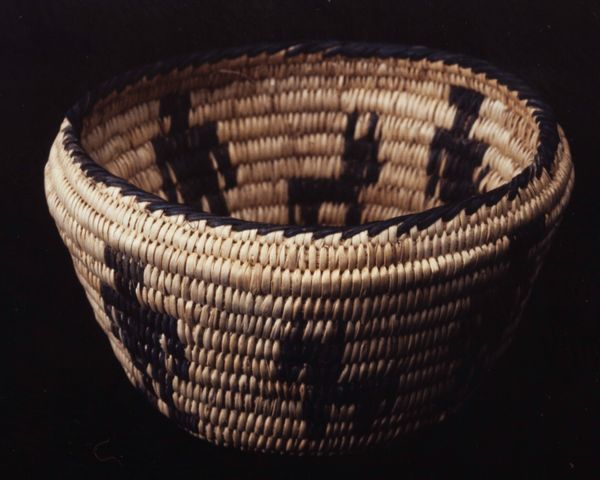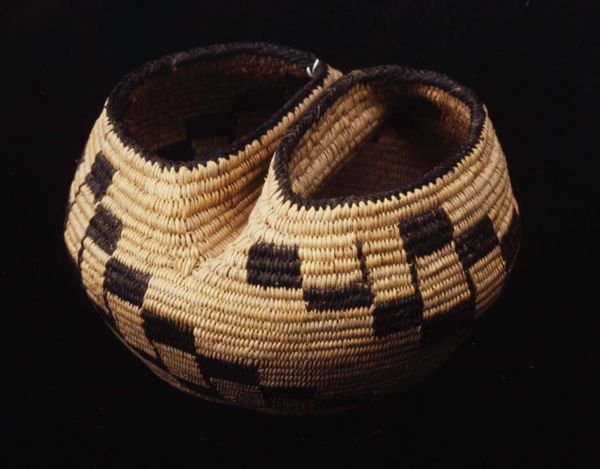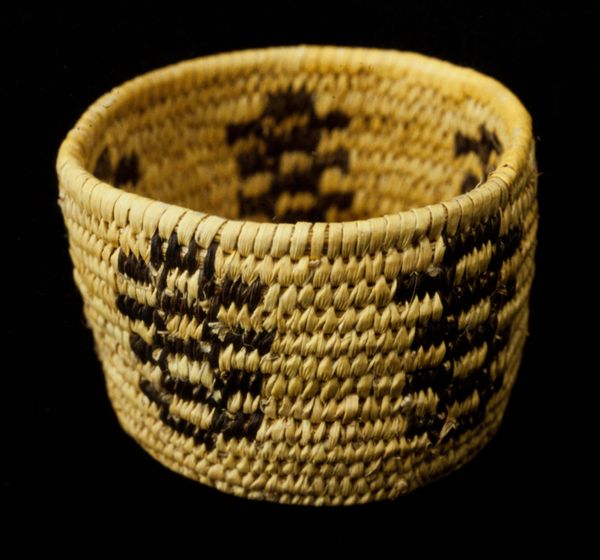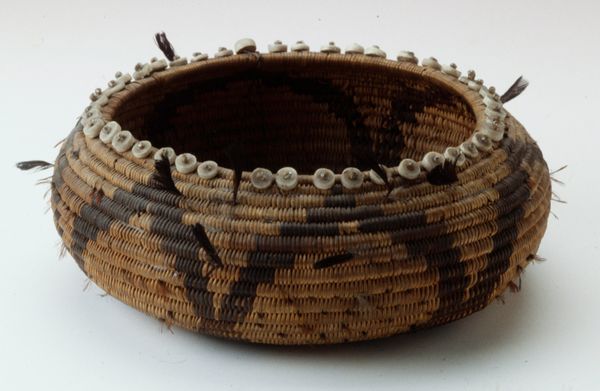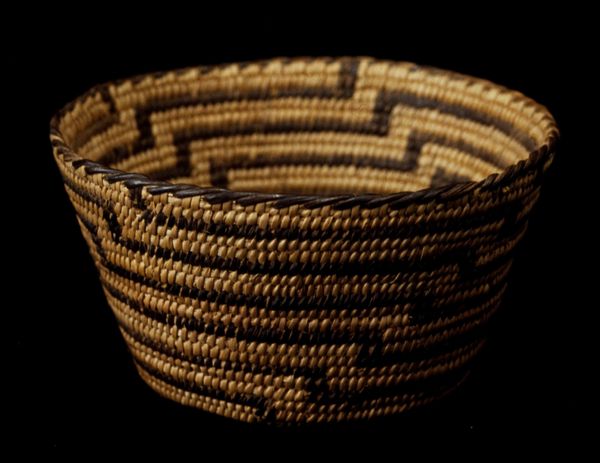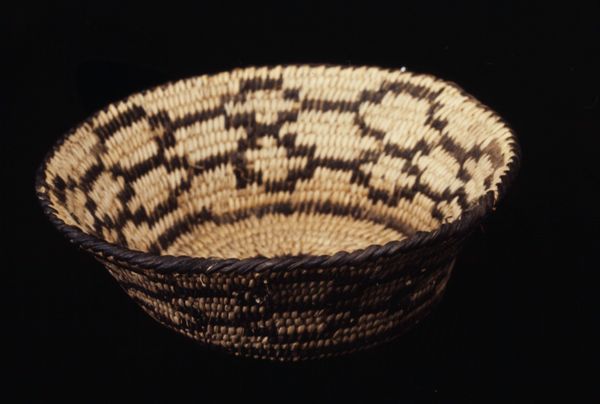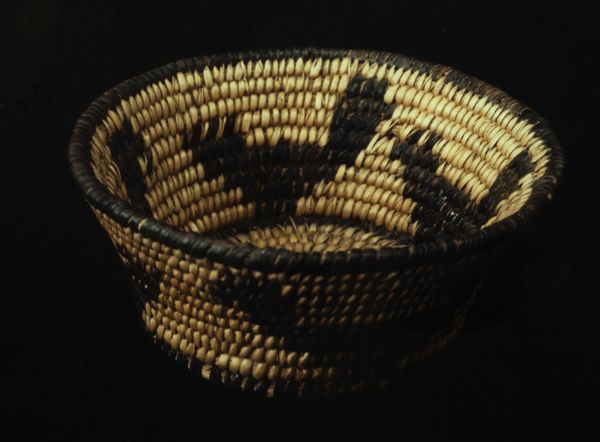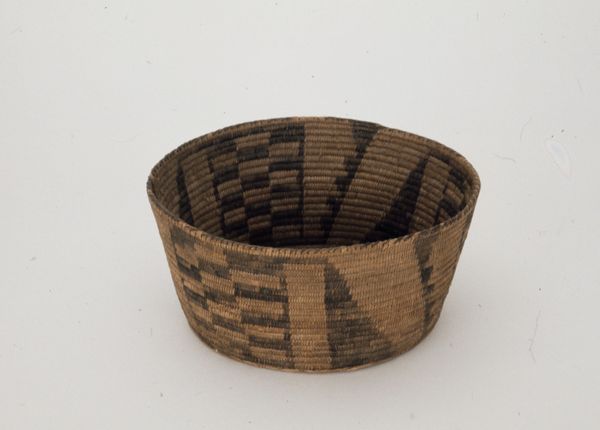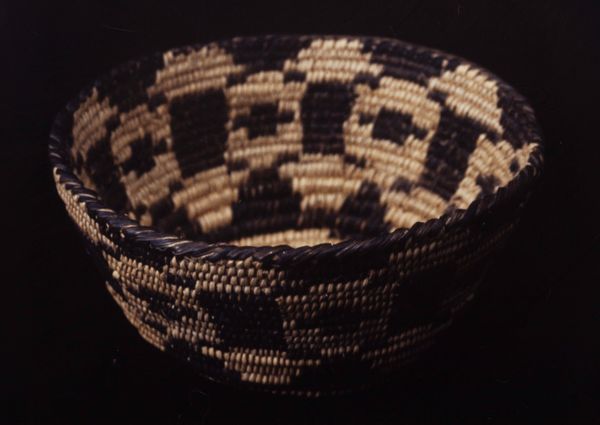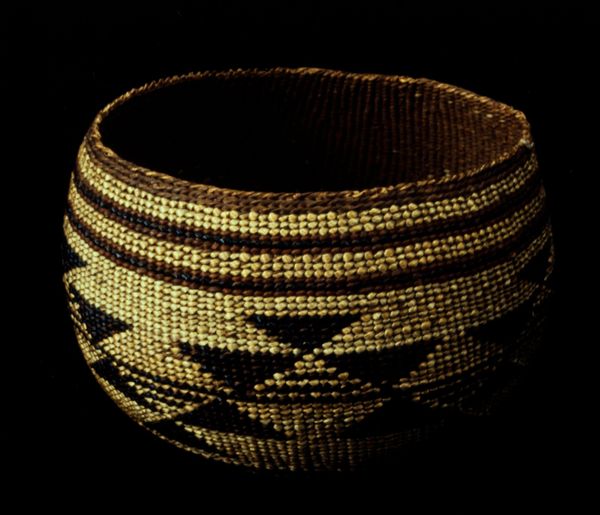
fibre-art, weaving
#
fibre-art
#
sculpture
#
weaving
#
geometric
#
ceramic
#
indigenous-americas
Dimensions: 1 1/4 x 3 1/8 x 3 1/8 in. (3.2 x 7.9 x 7.9 cm)
Copyright: Public Domain
This basket was probably made by an Akimel O'odham artist, also known as Pima, using traditional weaving techniques. I love how the artist uses simple, natural materials to create something both functional and beautiful. The contrasting colors – the pale straw against the dark brown – create a striking visual rhythm, a beat that our eyes can follow. Each stitch, each turn of the fiber, speaks to a process of slow, deliberate creation. It's clear that the hand is in control, guiding the materials, but there’s also a wonderful give-and-take, a conversation between the artist and the medium. Thinking about artists who share this love of simple forms, the work of Agnes Martin comes to mind, with its quiet, meditative grids, where repetition becomes a form of contemplation. Art, whether it's painting or weaving, is ultimately about seeing and feeling the world in new ways.
Comments
minneapolisinstituteofart about 2 years ago
⋮
Willow, cottontail, and black martynia, or devils claw, are the main materials used to sew baskets of the Akimel O’othom and Tohono O’odham. The availability of these plant fibers in the environment aide in identifying differences between the two tribe’s baskets. The Akimel O’othom who live along the river and few streams have easy access to willow and cottontail, which is reflected in their design being predominantly shown as a black pattern on a white background. The Tohono O’odham, who live in the desert where black martynia is more abundant, predominantly use a black background with white designs.
Join the conversation
Join millions of artists and users on Artera today and experience the ultimate creative platform.
